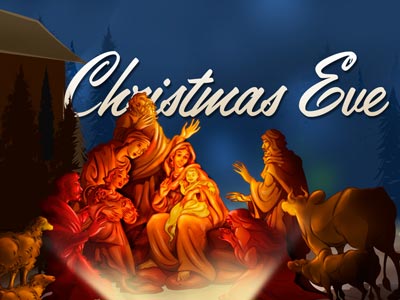-
Christ's Entrance Series
Contributed by Freddy Fritz on Nov 28, 2020 (message contributor)
Summary: In this lesson, we learn about Christ's entrance for his first and second advents.
Today is the First Sunday of Advent in 2020.
“Advent” (from the Latin adventus) means “coming,” and it refers to the season immediately before Christmas.
In an article for Christian History magazine, Elesha Coffman offers a fascinating history of Advent and Christmas traditions. She writes:
The first church official to propose special activities for the pre-Christmas period was Perpetuus, bishop of Tours, in 490. To help his flock prepare for the holiday, he advocated fasting every Monday, Wednesday, and Friday from Martinmas (November 11) to Christmas Eve. This practice, which mirrored Lent, spread slowly throughout France, Spain, and Germany. Then it crashed into Rome.
Roman attention to the Advent season trailed Perpetuus by about 100 years, and it took a radically different tone. While much of Western Europe, and at least portions of the Christian East, fasted, Roman Christians celebrated. Perhaps it seemed odd to them to approach Christ’s birth as somberly as they did his death. By the eleventh century, though, Rome had come around, and Advent meant no feasts, no recreational travel, no marital relations, and no weddings. (These prohibitions were dropped in recent centuries.)
Sometime in all of this, the start date for Western Advent slid back two weeks, to the Sunday closest to St. Andrew’s Day (November 30). As a result, Advent can last anywhere from 22 to 28 days, though for the sake of year-to-year consistency, Advent calendars start with December 1. Yet not everyone kicks off the Christmas season at the same time or in the same way.
In the Orthodox Church, Advent still includes fasting, and in most places it lasts from November 15 to December 24. The Armenian Orthodox Church is an exception; its members fast for three of the seven weeks between November 15 (St. Philip’s Day) and January 6 (Epiphany).
St. Barbara’s Day, December 4, signals the beginning of the Christmas season in Syria, Lebanon, and parts of France and Germany. Some Middle Eastern customs for the day resemble American Halloween—children dress up in frightening costumes and go door-to-door collecting candy and other small gifts. This activity has no relationship to the story of St. Barbara, which states that her father locked her in a tower, killed her for her Christian faith, and was then struck by lightning. Not that it matters; historians now doubt that St. Barbara even existed.
St. Nicholas’s Day, December 6, inaugurates the Christmas festivities in Austria, Belgium, Czechoslovakia, the Netherlands, and parts of Germany. On the night of December 5, St. Nicholas—accompanied, oddly enough, by a little demon—brings gifts for good children, who set out shoes or stockings for him to fill. The Dutch make the biggest production of Nick’s arrival, gathering to watch his ship land in Amsterdam, then seeing him off on his flying, white horse. Obviously, a lot of this pageantry crossed over to America, except that our St. Nicholas arrives via the Macy’s Thanksgiving Day Parade and doesn’t deliver his gifts until December 24.
Swedes wait until St. Lucy’s Day, December 13, to commence Christmas observances. Lucy, who supposedly died in Italy in 304, became a Scandinavian favorite when that region converted to Christianity, beginning in about the eleventh century. Lucy’s name comes from the Latin word for “light,” but, before sixteenth-century calendar reforms, her feast day fell on December 21—the shortest day of the year. Scandinavians were pretty desperate for light around that time, so they latched onto Lucy. Her annual remembrance involves a girl from each household wearing a wreath of lingonberry leaves and lit candles on her head and making an early breakfast for the family.
Most families have Christmas traditions, and many families also have Advent traditions. It is the time of the year in which we begin to think about the birth, the first advent, of Christ.
I would like us to consider the advents of Christ, and today I would like to examine the entrance of Christ.
Let us read Deuteronomy 18:15-19:
15 “The Lord your God will raise up for you a prophet like me from among you, from your brothers—it is to him you shall listen— 16 just as you desired of the Lord your God at Horeb on the day of the assembly, when you said, ‘Let me not hear again the voice of the Lord my God or see this great fire any more, lest I die.’ 17 And the Lord said to me, ‘They are right in what they have spoken. 18 I will raise up for them a prophet like you from among their brothers. And I will put my words in his mouth, and he shall speak to them all that I command him. 19 And whoever will not listen to my words that he shall speak in my name, I myself will require it of him.’ ” (Deuteronomy 18:15-19)

 Sermon Central
Sermon Central



